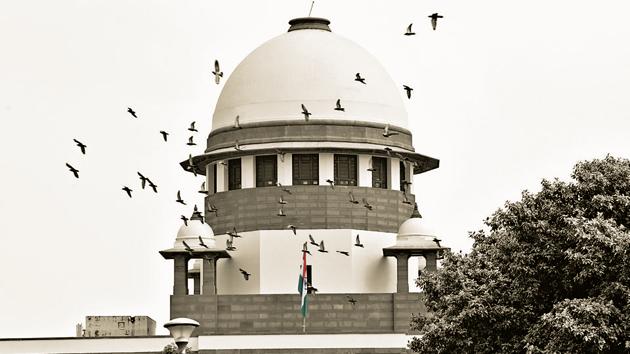Sabarimala: With its ‘essentiality doctrine’, has SC walked into a trap? | Opinion
The court is not the clergy. Instead of deciding on what is integral to faith, follow the Constitution
The decision by the Supreme Court to send the Sabarimala case to a larger constitutional bench is disappointing. While there is no formal stay on the entry of women into the shrine — the restrictions were lifted by a 2018 court order that will now be reviewed — ferocious and violent protests and political pussyfooting means that an effective ban remains.

As a feminist, I find it abominable to tell women that their monthly period requires them to keep away from certain places of worship. The prevarication of the judiciary is a setback for women of all faiths: Muslim women fighting for the right to enter all mosques, Bohri women battling the horrific custom of female genital mutilation (FGM), Parsi women demanding equal religious rights even if they marry outside the community and so on.
But the court, which is now balking at interfering with faith, set this trap for itself because of what is called the ‘essentiality doctrine’.
It was as far back as 1954, in a case involving the Shirur Matt, that the SC invented the “essentiality” principle. Religion came to be defined and interpreted by that which was deemed integral or “essential” to the practice of a particular faith.
What this has ended up doing is converting judges into the clergy who have to decide what is an essential religious tenet. Instead of interpreting the Constitution, this added and self-appointed responsibility means that the judiciary has become the custodian of religion, instead of the protector of constitutionally guaranteed religious equality and freedom.
The court applied this principle in 1994 (Ismail Faruqi Vs Union of India) when the Centre’s acquisition of the disputed site in Ayodhya was challenged. The bench ruled that a mosque was “not essential” to the practice of Islam because Muslims could offer namaz anywhere. This is a highly unnecessary approach. The judges could have simply used the eminent domain principle and cited public order as a rationalisation, rather than adjudicate on Islam. One cannot but help wonder if this conclusion on the place of a mosque in Islam also played a part in the court’s eventual decision on Ayodhya and the Ram Mandir.
A similarly problematic essentiality doctrine was applied to Sabarimala. In 2018 when a bench under the Chief Justice Dipak Misra ruled that women of all ages must be allowed entry at the Kerala shrine, the justification was that devotees of Lord Ayyappa (the celibate God to whom the shrine is built) did not constitute a separate religious denomination and that the exclusion of women was not an “essential religious practice”.
Believe it or not, this was the basis on which the Supreme Court was able to strike down triple talaq as well. Once again, it argued that instant divorce was not an essential Islamic practice.
My question to the judiciary is this: Suppose, tomorrow, there is an essential practice that is patently discriminatory and prejudiced against women, or let’s say Dalits, should we sit back and refuse to get involved because it is an essential religious practice? Or should we — and here we turn especially towards our Supreme Court — show the courage to privilege secular laws of equality over all personal laws, no matter which faith?
What if tomorrow the court believes that FGM is an essential practice for the Bohra community? Are we going to sit back and allow seven-year-old children to have their genitals cut in the name of tradition? Or imagine, if you will, that the judiciary had been convinced that it was indeed essential to the core of all faiths to see homosexuality as deviant. Would the courts then not have delivered their historic and welcome judgment on Section 377?
I understand that there can be a clash between the fundamental rights enshrined under Article 14 (right to equality) and Article 25 (freedom of religion). But, surely, these collisions cannot be determined by arbitrary and highly subjective interpretations of what different religions hold as sacred and essential.
The “essentiality doctrine” is frankly either a camouflage ( for taking decisions the court has already made up its mind on) or a slippery slope. It opens the floodgates for some religions to feel they have been discriminated against in comparison to others. Hence you will see the minorities ask why triple talaq (which is abhorrent and should have gone) being struck down is accepted, but not the order on Sabarimala.
It is time for the courts — and for our politicians — to uphold modern principles and norms irrespective of what religion — any religion — says about them. We can’t both aspire to a progressive uniform civil code (which I support), and be anxious about what essential religious practices say.
Surely, we can be more enlightened than that.
The essentiality doctrine was a court invention. It now needs to be discarded.
Barkha Dutt is an award-winning journalist and author
The views expressed are personal






